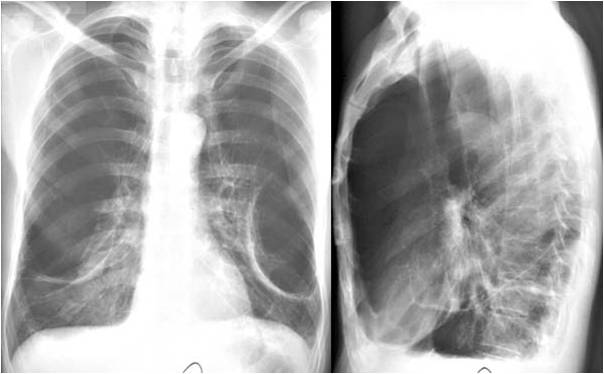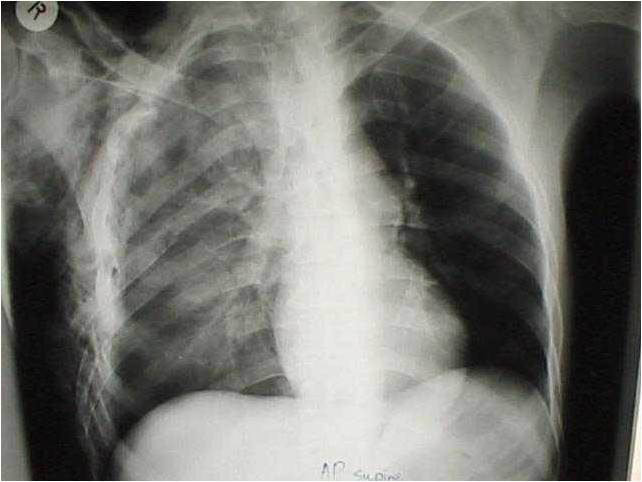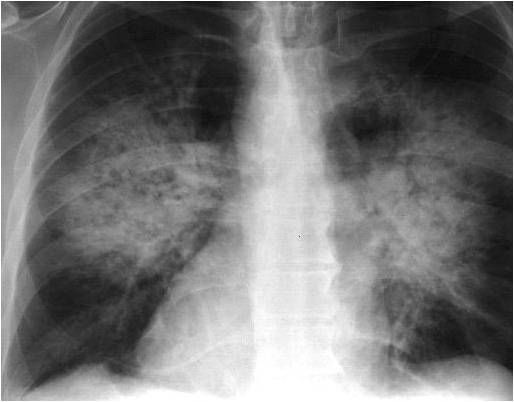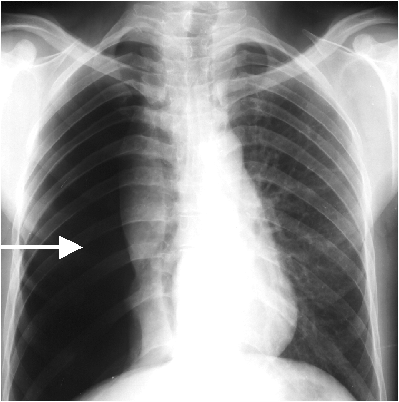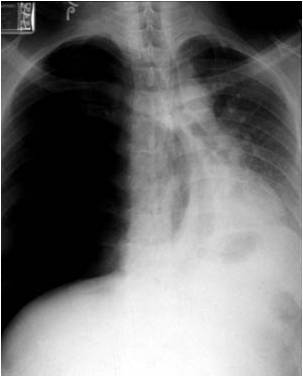Radtech Simulation Examination 3

This is your Radtech Simulation Exam 3 for HAAD,
this is taken from the last month's exam
you have 120 minutes to finish 100 items
you need 70% to pass
Answers are at the last page so DON'T EXIT IMMEDIATELY
PLEASE MAKE SURE THAT YOU HAVE A STRONG INTERNET CONNECTION
- 1.
Radiology is only used for diagnostic purposes
- A.
True
- B.
False
Correct Answer
B. FalseExplanation
diagnostic and therapeuticRate this question:
-
- 2.
Which of the following is true about X rays?
- A.
Uses a vacuum and low potential difference
- B.
Denser materials cause less blackening
- C.
Form of electromagnetic energy with long wavelength
- D.
All of the above
Correct Answer
B. Denser materials cause less blackeningExplanation
Denser materials cause less blackening in X rays because X rays are high-energy electromagnetic waves that can penetrate through materials. When X rays pass through a material, they interact with the atoms and electrons in the material. Denser materials have more atoms and electrons, which results in more interactions and scattering of the X rays. This scattering reduces the amount of blackening on the X-ray film or detector, making denser materials appear less black.Rate this question:
-
- 3.
Which of the following is true about contrast examinations?
- A.
Myelography performed by injecting contrast into epidural space
- B.
Angiography can only be performed in the intra-arterially
- C.
Contrast medium can be mixed with air or water
- D.
Sinogram is a contrast study for the frontal sinuses
Correct Answer
C. Contrast medium can be mixed with air or waterExplanation
Contrast examinations involve the use of a contrast medium, which is a substance that helps to highlight certain structures or areas of the body during medical imaging procedures. The contrast medium can be mixed with either air or water to enhance visibility and provide better imaging results. This allows for better visualization of specific organs or structures, aiding in the diagnosis and treatment of various medical conditions.Rate this question:
-
- 4.
Which of the following modalities can be used to determine flow velocities through vasculature?
- A.
MRI
- B.
Ultrasound
- C.
Spiral CT
- D.
Teleradiology
Correct Answer
B. UltrasoundExplanation
Ultrasound can be used to determine flow velocities through vasculature because it uses sound waves to create images of the blood vessels and measure the speed at which blood is flowing. This non-invasive modality allows for real-time visualization and measurement of blood flow, making it an effective tool in diagnosing and monitoring vascular conditions. MRI and Spiral CT can provide detailed images of the blood vessels but may not directly measure flow velocities. Teleradiology is a method of transmitting radiological images for interpretation and does not directly determine flow velocities.Rate this question:
-
- 5.
When examining the chest or musculoskeletal system which of the following modalities would be least helpful?
- A.
X-ray
- B.
MRI
- C.
Spiral CT
- D.
Ultrasound
Correct Answer
D. UltrasoundExplanation
Ultrasound would be the least helpful modality when examining the chest or musculoskeletal system. Unlike X-ray, MRI, and Spiral CT, ultrasound does not provide detailed images of the bones or deep tissues. Ultrasound is primarily used to visualize soft tissues and organs, making it less effective for evaluating the skeletal system or identifying fractures. Therefore, in this context, ultrasound would be the least helpful modality.Rate this question:
-
- 6.
When choosing imaging studies, protocol should be followed for most patients in clinical practice
- A.
True
- B.
False
Correct Answer
B. FalseExplanation
The statement suggests that following a protocol is necessary for most patients when choosing imaging studies in clinical practice. However, the correct answer is False, indicating that following a protocol is not necessary for most patients. This implies that there may be exceptions or variations in the approach to selecting imaging studies for different patients in clinical practice.Rate this question:
-
- 7.
Which of the following can be assessed on plain film?
- A.
Myocardial thickness
- B.
Heart size
- C.
Motion
- D.
Coronary artery disease
Correct Answer
B. Heart sizeExplanation
Heart size can be assessed on plain film because the size of the heart can be visualized and measured using X-ray imaging techniques. This can provide information about the overall size and shape of the heart, which can be useful in diagnosing certain cardiac conditions.Rate this question:
-
- 8.
which of the following factors and their effect on the heart's appearance are paired correctly?
- A.
Mediastinal shift: appearant enlargement
- B.
COPD: Masked enlargement
- C.
Scoliosis: masked enlargement
- D.
All of the above
Correct Answer
B. COPD: Masked enlargementExplanation
COPD (Chronic Obstructive Pulmonary Disease) is a respiratory condition that causes obstruction of airflow and difficulty in breathing. This can lead to changes in the structure and function of the heart. In COPD, the heart may become enlarged, but this enlargement may not be easily visible on imaging due to the presence of other lung abnormalities. Therefore, the term "masked enlargement" accurately describes the effect of COPD on the heart's appearance.Rate this question:
-
- 9.
Which condition is associated with the image above?
- A.
COPD
- B.
CHF
- C.
Pneumothorax
- D.
Atelectasis
Correct Answer
B. CHFExplanation
The image above is associated with CHF (Congestive Heart Failure). This condition occurs when the heart is unable to pump enough blood to meet the body's needs. It can lead to fluid accumulation in the lungs, which is depicted in the image. Symptoms of CHF include shortness of breath, fatigue, and fluid retention.Rate this question:
-
- 10.
This image shows which of the following?
- A.
Pleural effusion
- B.
Aortic aneurysm
- C.
COPD: Emphysema
- D.
Pericarditis
Correct Answer
D. Pericarditis -
- 11.
This image is significant for which of the following
- A.
Pleural effusion
- B.
Kerly b lines
- C.
Pericardial effusion
- D.
Pneumothorax
Correct Answer
C. Pericardial effusionExplanation
This image is significant for pericardial effusion because it shows an accumulation of fluid around the heart, which is a characteristic feature of pericardial effusion. This condition occurs when there is an abnormal buildup of fluid in the pericardial sac, the double-layered membrane that surrounds the heart. Pericardial effusion can cause symptoms such as chest pain, shortness of breath, and fluid retention. It can be caused by various factors, including infection, inflammation, or trauma to the heart. Treatment may involve draining the fluid or addressing the underlying cause.Rate this question:
-
- 12.
The condition depicted in this picture would cause which masked enlargement of the heart on CXR
- A.
True
- B.
False
Correct Answer
B. False -
- 13.
This is considered
- A.
Tension pneumothorax
- B.
Situs inversus
- C.
Mediastinal shift
- D.
A & C
Correct Answer
B. Situs inversusExplanation
Situs inversus is the correct answer because it is a condition in which the organs in the chest and abdomen are reversed or mirrored from their normal positions. This can result in the heart being located on the right side of the chest instead of the left. In the context of the given options, situs inversus could potentially explain the observed symptoms or findings related to tension pneumothorax and mediastinal shift.Rate this question:
-
- 14.
This patient is likely suffering from?
- A.
Pericarditis
- B.
Pneumothorax
- C.
Heart Failure
- D.
Aortic stenosis
Correct Answer
C. Heart FailureExplanation
Based on the given information, it can be inferred that the patient is likely suffering from heart failure. This condition occurs when the heart is unable to pump enough blood to meet the body's demands. Symptoms may include shortness of breath, fatigue, and fluid retention. Pericarditis is inflammation of the pericardium, pneumothorax is a collapsed lung, and aortic stenosis is a narrowing of the aortic valve, none of which are indicated in the given information.Rate this question:
-
- 15.
This patient is suffering from which of the following?
- A.
Hemothorax
- B.
Aortic aneurysm
- C.
Pericarditis
- D.
Heart Failure
Correct Answer
D. Heart FailureExplanation
Heart failure is the most likely diagnosis based on the given information. The other options, hemothorax, aortic aneurysm, and pericarditis, do not align with the symptoms provided. Heart failure is a condition where the heart is unable to pump enough blood to meet the body's needs. The patient's symptoms may include shortness of breath, fatigue, swelling in the legs, and fluid retention. Without further information, it is difficult to determine the specific cause of the heart failure.Rate this question:
-
- 16.
This patient most likely has which of the following?
- A.
Hemothorax
- B.
Acute PE
- C.
Emphysema
- D.
Pericardial effusion
Correct Answer
B. Acute PEExplanation
This patient most likely has Acute PE (pulmonary embolism). Acute PE refers to the blockage of one or more arteries in the lungs by a blood clot. The symptoms of acute PE can include sudden shortness of breath, chest pain, coughing up blood, and rapid heart rate. Given the limited information provided, it is difficult to definitively diagnose the condition, but based on the given options, acute PE aligns most closely with the patient's symptoms.Rate this question:
-
- 17.
Structures closer to the x-ray film appear larger
- A.
True
- B.
False
Correct Answer
B. FalseExplanation
Structures closer to the x-ray film do not appear larger. In fact, the opposite is true. When an object is closer to the film, it appears smaller in the x-ray image. This is because the x-rays diverge as they pass through the object, causing the image to be magnified when the object is further away from the film. So, the correct answer is false.Rate this question:
-
- 18.
this CXR is best described by which of the following?
- A.
Rotated
- B.
PA view
- C.
Normal
- D.
Emphysema
Correct Answer
C. NormalExplanation
This CXR is best described as "normal" because there are no indications of any abnormalities or pathologies present in the image. The structures and organs appear to be in their expected positions and there are no signs of any diseases or conditions such as emphysema. The image is also taken in a PA (posteroanterior) view, which is a common and standard position for chest X-rays.Rate this question:
-
- 19.
this patient is most likely suffering from
- A.
Situs inversus
- B.
Pneumothorax
- C.
Atelectasis
- D.
RUL pnuemonia
Correct Answer
D. RUL pnuemoniaExplanation
The patient is most likely suffering from RUL pneumonia because it is the only option that is a respiratory condition. Situs inversus is a condition where the organs are mirrored, pneumothorax is a collapsed lung, and atelectasis is a partial or complete collapse of the lung. Only RUL pneumonia fits the category of a respiratory condition.Rate this question:
-
- 20.
this patient is suffering from which of the following?
- A.
pericardial effusion
- B.
LLL pneumonia
- C.
Emphysema
- D.
CHF
Correct Answer
B. LLL pneumoniaExplanation
The correct answer is LLL pneumonia. The patient is likely suffering from pneumonia in the left lower lobe of the lung. This can cause symptoms such as cough, fever, chest pain, and difficulty breathing. Pericardial effusion refers to the buildup of fluid around the heart, which is not indicated in the question. Emphysema is a chronic lung condition characterized by damage to the air sacs in the lungs, and CHF refers to congestive heart failure, both of which are not mentioned in the question. Therefore, LLL pneumonia is the most likely diagnosis for this patient.Rate this question:
-
- 21.
This is best described by which of the following
- A.
Mediastinal shift
- B.
Emphysema
- C.
Atelectasis
- D.
Pneumonia
Correct Answer
C. AtelectasisExplanation
Atelectasis is the best description for the given scenario. Atelectasis refers to the collapse or partial collapse of a lung or a portion of it. It can be caused by various factors such as blockage of the air passages, compression of the lung, or decreased production of surfactant. Atelectasis often leads to decreased oxygen levels and can cause symptoms like shortness of breath and chest pain. In contrast, mediastinal shift refers to the displacement of the mediastinum (the area between the lungs) and is not the best fit for the given scenario. Emphysema and pneumonia are also not the best descriptions as they involve different pathological processes.Rate this question:
-
- 22.
Where in this picture is the atelectasis located?
- A.
RUL
- B.
LUL
- C.
RML
- D.
LLL
Correct Answer
B. LULExplanation
The atelectasis is located in the left upper lobe (LUL) of the picture.Rate this question:
-
- 23.
This condition is known as
- A.
Cardiomegaly
- B.
Atelectasis
- C.
Pneumonia
- D.
Heart failure
Correct Answer
B. AtelectasisExplanation
Atelectasis refers to the partial or complete collapse of a lung or a section of it. It occurs when the tiny air sacs in the lung, called alveoli, deflate and cause the lung tissue to collapse. This condition can be caused by various factors, such as blockage of the airways, lung diseases, or surgery. Symptoms of atelectasis include shortness of breath, rapid breathing, and decreased oxygen levels. Cardiomegaly refers to an enlarged heart, pneumonia is an infection in the lungs, and heart failure is a condition where the heart cannot pump enough blood to meet the body's needs.Rate this question:
-
- 24.
- A.
Pleurisy
- B.
Pneumonia
- C.
Collapse
- D.
Pleural effusion
Correct Answer
C. CollapseExplanation
Collapse refers to a condition where the lung tissue becomes deflated or collapses, leading to a decrease in the exchange of oxygen and carbon dioxide. This can occur due to various reasons such as a blockage in the airway, trauma to the lung, or certain medical conditions. Pleurisy, pneumonia, and pleural effusion are all conditions that can cause inflammation or fluid accumulation in the lungs, but they do not directly result in lung collapse. Therefore, collapse is the most appropriate answer among the given options.Rate this question:
-
- 25.
What is the most reliable indicator of this condition
- A.
Kerly's b lines
- B.
Displacement of hilar vessels
- C.
Thickened interlobular septa
- D.
A & C
Correct Answer
B. Displacement of hilar vesselsExplanation
this is atelectasisRate this question:
-
- 26.
This condition can be best described by which of the following?
- A.
Of neoplastic origin
- B.
Caused by low surfactant
- C.
Massive effusion
- D.
A & C
Correct Answer
D. A & CExplanation
The correct answer is A & C. This condition can be best described as being of neoplastic origin and causing massive effusion. Neoplastic origin refers to the condition being caused by abnormal growth of cells, which can lead to the formation of tumors. Massive effusion refers to the accumulation of a large amount of fluid in a body cavity, such as the pleural or pericardial cavity. Therefore, the correct answer is A & C, as the condition is both of neoplastic origin and causes massive effusion.Rate this question:
-
- 27.
This person is suffering from
- A.
Situs inversus
- B.
Pleural effusion
- C.
Emphysema
- D.
Atelectasis
Correct Answer
B. Pleural effusionExplanation
Pleural effusion is the accumulation of fluid in the pleural cavity, the space between the lungs and the chest wall. This condition can cause symptoms such as shortness of breath, chest pain, and coughing. It can be caused by various factors including infections, heart failure, and lung diseases. In this case, the person is suffering from pleural effusion, which explains the presence of fluid in the pleural cavity and the associated symptoms.Rate this question:
-
- 28.
this is?
- A.
Hemothorax
- B.
CHF
- C.
COPD
- D.
Pneumothorax
Correct Answer
A. HemothoraxExplanation
Hemothorax refers to the accumulation of blood in the pleural cavity, the space between the lungs and the chest wall. This condition can occur due to trauma, such as a chest injury or a ruptured blood vessel, leading to internal bleeding. Symptoms of hemothorax include chest pain, difficulty breathing, and decreased breath sounds on one side of the chest. Given the options provided, hemothorax is the most appropriate answer as it directly relates to the accumulation of blood in the pleural cavity.Rate this question:
-
- 29.
this image demonstrates
- A.
Acute PE
- B.
Asbestosis
- C.
Pleural effusion
- D.
Heart failure
Correct Answer
B. AsbestosisExplanation
The image demonstrates asbestosis because asbestosis is a lung disease caused by the inhalation of asbestos fibers, which leads to the formation of scar tissue in the lungs. The image may show characteristic findings such as interstitial fibrosis, pleural plaques, or pleural thickening, which are commonly seen in asbestosis. Acute PE, pleural effusion, and heart failure may have different imaging findings and are not associated with asbestos exposure.Rate this question:
-
- 30.
this patient's RUL is probably filled by a
- A.
Tumor or granuloma
- B.
Loculated effusion
- C.
Acute hemothorax
- D.
Secondary TB infection
Correct Answer
A. Tumor or granulomaExplanation
The patient's RUL (right upper lobe) is likely filled by a tumor or granuloma. This is indicated by the statement "this patient's RUL is probably filled by a" followed by the options tumor or granuloma, loculated effusion, acute hemothorax, and secondary TB infection. Based on this information, it can be inferred that a tumor or granuloma is the most likely cause for the filling of the RUL.Rate this question:
-
- 31.
the most reliable sign of this condition is?
- A.
Hyperfluency
- B.
Hyperinflation
- C.
Flattened diapraghm
- D.
Decreased vasularity
Correct Answer
D. Decreased vasularityExplanation
Decreased vascularity refers to a reduction in the blood supply to a particular area or organ. In the context of the given question, decreased vascularity can be a reliable sign of the condition being referred to. This is because a decrease in blood flow can indicate a potential problem or abnormality in the affected area, which may require further investigation or treatment. However, without additional information about the specific condition being discussed, it is difficult to provide a more specific explanation.Rate this question:
-
- 32.
these pictures show
- A.
Valvular stenosis
- B.
Cardiac calcification
- C.
Bullae in the lungs
- D.
Pneumothorax
Correct Answer
C. Bullae in the lungsExplanation
The pictures provided show bullae in the lungs. Bullae are large air-filled spaces that form within the lung tissue. They can be caused by conditions such as chronic obstructive pulmonary disease (COPD) or emphysema. Bullae can cause symptoms like shortness of breath and can increase the risk of complications such as pneumothorax (collapsed lung). Therefore, the presence of bullae in the lungs is the most likely explanation based on the given information.Rate this question:
-
- 33.
this image is most significant for?
- A.
Blood and fluid in lungs
- B.
Pneumonia of LUL
- C.
Emphysema
- D.
Tumor or granulomas
Correct Answer
A. Blood and fluid in lungsExplanation
The image is most significant for blood and fluid in the lungs. This can be inferred from the given answer options, where the other options like pneumonia of LUL, emphysema, and tumor or granulomas do not specifically mention blood and fluid in the lungs. Therefore, it can be concluded that the image is primarily showing the presence of blood and fluid in the lungs.Rate this question:
-
- 34.
ths illustrates which of the following?
- A.
Mediastinal shift
- B.
Pulmonary edema
- C.
Bilateral pneumonia
- D.
Metastatic lung cancer
Correct Answer
B. Pulmonary edemaExplanation
This question is asking about a condition that is illustrated by the given information. The given information does not provide any specific details or evidence of mediastinal shift, bilateral pneumonia, or metastatic lung cancer. However, pulmonary edema is a condition characterized by the accumulation of fluid in the lungs, which can cause symptoms such as shortness of breath and coughing. Therefore, the given information is more consistent with pulmonary edema than the other options.Rate this question:
-
- 35.
this is?
- A.
Atelectasis
- B.
Pneumothorax
- C.
Emphysema
- D.
Acute PE
Correct Answer
B. PneumothoraxExplanation
A pneumothorax is the most likely explanation for the given answer. A pneumothorax occurs when air leaks into the space between the lung and the chest wall, causing the lung to collapse partially or completely. This can lead to symptoms such as sudden chest pain, shortness of breath, and decreased breath sounds on one side of the chest. It can be caused by trauma, underlying lung diseases, or spontaneous rupture of a small air sac. Prompt medical attention is necessary to treat a pneumothorax and prevent complications.Rate this question:
-
- 36.
this is which of the following?
- A.
Lung cancer
- B.
Tension pneumo
- C.
Right sided mediastinal shift
- D.
B & C
Correct Answer
B. Tension pneumoExplanation
The correct answer is tension pneumo. Tension pneumothorax is a condition in which air accumulates in the pleural space, causing the lung to collapse and putting pressure on the heart and other structures in the mediastinum. This can lead to a shift of the mediastinum towards the unaffected side. Lung cancer is a separate condition involving the growth of abnormal cells in the lung tissue. Therefore, the correct answer is tension pneumo.Rate this question:
-
- 37.
this image shows
- A.
Atelectasis
- B.
Pulmonary embolism
- C.
Cardiomegaly
- D.
Bilateral effusion
Correct Answer
B. Pulmonary embolism -
- 38.
this condition is
- A.
Pneumonia
- B.
Hemothorax
- C.
Loculated effusion
- D.
Tuberculosis
Correct Answer
D. TuberculosisExplanation
The given options are conditions that can affect the lungs. Pneumonia is an infection in the lungs, hemothorax is the accumulation of blood in the pleural cavity, and loculated effusion refers to a localized collection of fluid in the lungs. Among these options, tuberculosis is a chronic bacterial infection that primarily affects the lungs. It is characterized by the formation of granulomas in the lung tissue. Therefore, tuberculosis is the most appropriate answer in this context.Rate this question:
-
- 39.
this film is best described as?
- A.
Bilateral pleural effusion
- B.
Respiratory distress sydrome
- C.
Tuberculosis
- D.
Metastatic lung cancer
Correct Answer
B. Respiratory distress sydromeExplanation
The given options are medical conditions, but the question is asking for a description of a film. Therefore, it is not possible to provide an explanation for the given answer as it does not match the question.Rate this question:
-
- 40.
this condition begins with?
- A.
Interstitial pattern in upper lobes
- B.
Calcification and shift of fissures
- C.
Hilar node displacement
- D.
Decreased vasularity of periphery
- E.
All of the above
Correct Answer
A. Interstitial pattern in upper lobesExplanation
The correct answer is "interstitial pattern in upper lobes." This means that the condition being referred to starts with the presence of an interstitial pattern (abnormalities in the lung tissue) specifically in the upper lobes of the lungs. The other options mentioned (calcification and shift of fissures, hilar node displacement, and decreased vascularity of periphery) may be associated with certain lung conditions but are not specifically mentioned in the question as the starting point of the condition.Rate this question:
-
- 41.
Radiology is only used for diagnostic purposes
- A.
True
- B.
False
Correct Answer
B. FalseExplanation
diagnostic and therapeuticRate this question:
-
- 42.
Which of the following is true about X rays?
- A.
Uses a vacuum and low potential difference
- B.
Denser materials cause less blackening
- C.
Form of electromagnetic energy with long wavelength
- D.
All of the above
Correct Answer
B. Denser materials cause less blackeningExplanation
Denser materials cause less blackening because X-rays are highly penetrating electromagnetic waves that can pass through less dense materials more easily. When X-rays pass through a less dense material, they are absorbed less, resulting in less blackening on the film or detector. On the other hand, denser materials absorb more X-rays, causing more blackening on the film or detector. This property of X-rays is utilized in medical imaging and industrial applications to differentiate between different types of tissues or materials based on their density.Rate this question:
-
- 43.
Which of the following is true about contrast examinations?
- A.
Myelography performed by injecting contrast into epidural space
- B.
Angiography can only be performed in the intra-arterially
- C.
Contrast medium can be mixed with air or water
- D.
Sinogram is a contrast study for the frontal sinuses
Correct Answer
C. Contrast medium can be mixed with air or waterExplanation
Contrast examinations involve the use of a contrast medium, which can be mixed with air or water. This allows for better visualization of certain structures or organs during imaging procedures. The other options are incorrect because myelography is performed by injecting contrast into the subarachnoid space, angiography can be performed intra-arterially or intravenously, and a sinogram is a contrast study for the paranasal sinuses, not just the frontal sinuses.Rate this question:
-
- 44.
Which of the following modalities can be used to determine flow velocities through vasculature?
- A.
MRI
- B.
Ultrasound
- C.
Spiral CT
- D.
Teleradiology
Correct Answer
B. UltrasoundExplanation
Ultrasound can be used to determine flow velocities through vasculature. Ultrasound uses high-frequency sound waves to create images of the body's internal structures, including blood vessels. By analyzing the Doppler shift in the frequency of the reflected sound waves, ultrasound can measure the speed and direction of blood flow in the vasculature. This information is valuable for diagnosing conditions such as blood clots, narrowing of blood vessels, and evaluating the effectiveness of treatments. MRI and Spiral CT can also provide information about blood flow, but ultrasound is specifically known for its ability to assess flow velocities in the vasculature. Teleradiology is not a modality used for determining flow velocities through vasculature.Rate this question:
-
- 45.
When examining the chest or musculoskeletal system which of the following modalities would be least helpful?
- A.
X-ray
- B.
MRI
- C.
Spiral CT
- D.
Ultrasound
Correct Answer
D. UltrasoundExplanation
Ultrasound would be the least helpful modality when examining the chest or musculoskeletal system. This is because ultrasound is primarily used to visualize soft tissues and organs, such as the abdomen or reproductive system. X-ray, MRI, and Spiral CT are better suited for examining the chest and musculoskeletal system as they can provide more detailed images of bones, joints, and other structures. Ultrasound may not provide the necessary level of detail or visualization for these specific areas.Rate this question:
-
- 46.
When choosing imaging studies, protocol should be followed for most patients in clinical practice
- A.
True
- B.
False
Correct Answer
B. FalseExplanation
The statement suggests that there is a protocol that should be followed for most patients when choosing imaging studies in clinical practice. However, the correct answer is False, indicating that there may not be a fixed protocol that applies to all patients. The decision to choose imaging studies may vary depending on the individual patient's condition, symptoms, and the judgment of the healthcare provider.Rate this question:
-
- 47.
Which of the following can be assessed on plain film?
- A.
Myocardial thickness
- B.
Heart size
- C.
Motion
- D.
Coronary artery disease
Correct Answer
B. Heart sizeExplanation
Heart size can be assessed on plain film because it provides a clear image of the heart's shape and size. Plain film radiography, also known as X-ray, uses low levels of radiation to create detailed images of the internal structures of the body. By examining the X-ray image, doctors can determine the size of the heart and identify any abnormalities or conditions related to its size.Rate this question:
-
- 48.
which of the following factors and their effect on the heart's appearance are paired correctly?
- A.
Mediastinal shift: appearant enlargement
- B.
COPD: Masked enlargement
- C.
Scoliosis: masked enlargement
- D.
All of the above
Correct Answer
B. COPD: Masked enlargementExplanation
COPD (Chronic Obstructive Pulmonary Disease) is a condition that affects the lungs, causing difficulty in breathing. In COPD, the lungs become hyperinflated, which can push the heart downwards and make it appear smaller on imaging studies. This is why the term "masked enlargement" is used to describe the effect of COPD on the heart's appearance.Rate this question:
-
- 49.
Which condition is associated with the image above?
- A.
COPD
- B.
CHF
- C.
Pneumothorax
- D.
Atelectasis
Correct Answer
B. CHFExplanation
The image above is associated with CHF (Congestive Heart Failure). CHF is a condition where the heart is unable to pump enough blood to meet the body's needs. This can lead to fluid accumulation in the lungs, causing symptoms such as shortness of breath and congestion. The image may show signs of pulmonary edema or fluid in the lungs, which is commonly seen in CHF patients.Rate this question:
-
- 50.
This image shows which of the following?
- A.
Pleural effusion
- B.
Aortic aneurysm
- C.
COPD: Emphysema
- D.
Pericarditis
Correct Answer
D. PericarditisExplanation
The image is showing inflammation of the pericardium, which is the outer lining of the heart. This condition is known as pericarditis.Rate this question:
-
Quiz Review Timeline +
Our quizzes are rigorously reviewed, monitored and continuously updated by our expert board to maintain accuracy, relevance, and timeliness.
-
Current Version
-
Mar 20, 2023Quiz Edited by
ProProfs Editorial Team -
Sep 18, 2015Quiz Created by
Untalancy
 Back to top
Back to top








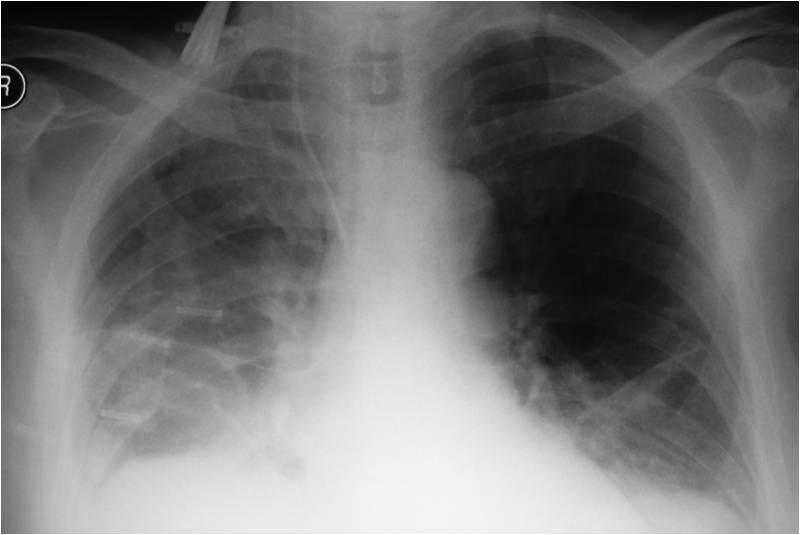






.jpg)


.jpg)






